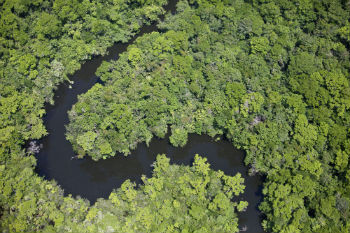Main menu
CEPF is a joint initiative of l’Agence Française de Développement, Conservation International, the European Union, Fondation Hans Wilsdorf, the Global Environment Facility, the Government of Canada, the Government of Japan and the World Bank. A fundamental goal is to ensure civil society is engaged in biodiversity conservation.
Visitez le site français コア情報の日本語翻訳を読むOr use Google Translate to translate the English site to your language:
GTranslate
The North American Coastal Plain Recognized As the World's 36th Biodiversity Hotspot
07 November 2017
07 November 2017
Researchers have identified a new biodiversity hotspot, one of only 36 in the world. The North American Coastal Plain biodiversity hotspot, which stretches from northern Mexico to southern Maine, runs along the coast and includes areas within major U.S. cities, most notably New York City and Washington, D.C.
The hotspot is home to 1,816 species of plants, 51 species of birds and 114 species of mammals that are found nowhere else in the world.
Among the notable endemic species are the Florida yew (Taxus floridana), an evergreen shrub/small tree; the Florida bonneted bat (Eumops floridanus); and a fish species known as broadspotted molly (Poecilia latipunctata). These three species are listed as Critically Endangered by the International Union for the Conservation of Nature.
The threats to the hotspot’s biodiversity have been overlooked for a long time because until recently, people didn’t realize how much biodiversity the area truly held.
“Sometimes something precious is right under your nose, but goes unnoticed,” said Reed Noss, Provost’s Distinguished Research Professor with the University of Central Florida’s Department of Biology “Such it is that a region long explored by botanists and zoologists – the North American Coastal Plain (NACP) – was recognized only recently as meeting the criteria for a global biodiversity hotspot.”
Biodiversity hotspots are the world’s most biologically rich yet threatened terrestrial areas. To qualify as a hotspot, a region has to meet two criteria: it has to contain at least 1,500 species of vascular plants as endemics and it has to have 30 percent or less of its original vegetation remaining. Click here for more information on the hotspot.





